2011 Chevrolet Camaro Convertible 2LT
Well, the pony car wars are heating up again, just as they did when they started in the late 60’s. And it’s the same players today as it was then, with the Ford Mustang, Chevy Camaro, and Dodge Challenger mixing it up in the battle for sales, if not on the track. For the first time in 25 years, the Chevy Camaro has passed the Mustang for sales supremacy. And with the Camaro convertible hitting the showrooms this spring, it’s likely to continue.
FAST FACTS
| 1. The Camaro Convertible’s power soft-top folds in 30 seconds and shuts with a single driver-operated latch. |
| 2. Pricing for the Camaro Convertible starts at $29,275 ($30,000 even with an $850 destination fee). Our 2LT test car starts at $32,650. |
| 3. The Camaro V6 is now rated at 312-hp, while V8-powered SS models make 400-hp with the 6-speed automatic or 426-hp with the 6-speed manual. |
| 4. Chevy claims better structural rigidity with the Camaro Convertible than a drop-top BMW 3 Series thanks to a strut tower bar, transmission support brace, underbody tunnel brace as well as front and rear V braces. |
We had a chance to spend an enjoyable week with the V6 rag top Camaro, and found it to be a thoroughly enjoyable automobile, but not without some of the same faults we found in the coupe version, and perhaps a few more unique to the drop top.
V6 DELIVERS ALL THE POWER YOU NEED
Overall, the driving experience is very good. Our press car came equipped with the 3.6 liter, 24-valve, Direct Injection, DOHC engine with variable valve timing, which now puts out 312-hp at 6500 rpm, and 270 lb-ft of torque at 5100 rpm. The window sticker shows 18-mpg city, and 29-mpg highway for gas mileage. We observed 17 and 28 during our test.
Despite the added 250 lbs of weight, the convertible adds over the coupe, bringing the curb weight up to a hair under 2 tons, this Camaro accelerates strongly from a stop. It has a nice flat torque curve so there is power all the way up the rev range. And in normal drive mode, the driver can control the accelerator pedal so the car will climb all the way up to the redline before shifting.
But put the 6-speed manumatic in manual mode, and upshifts become lazy, which takes much of the fun out of shifting yourself. There are two push buttons behind the spokes of the steering wheel, (right for upshifts – left for downshifts) but they’re more difficult to use than most other paddle shift mechanisms. Best to just keep this baby in auto-mode.
The V6 doesn’t deliver a visceral exhaust note, but there is some noise to let you know there’s some grunt under the hood. By comparison, the Mustang sings a more pleasant tune from its pipes, and the Dodge is the most roarty of the group, and really lets you know when you’re on full boil.
The brakes are stand-out units. They will quickly haul the Camaro down from illegal speeds with excellent force, feel, and modulation. When driving aggressively on twisty roads, you can mash the brake pedal to quickly slow the car before entering the turn, then crank the wheel and aim the car to the apex of the corner. Then you can power out of the turn with gusto with very little body lean. And just in case you get a bit too aggressive with the “go” pedal, there is electronic stability and traction control to reign the Camaro back in safely.
The 20-inch wheels with low profile tires (part of a $1600 RS package) provide excellent grip and handling as well. And despite the firm, sporty suspension tuning, the Camaro still has a comfortable ride quality. Chevy engineers did a good job of juggling all the trade-offs to arrive at the right handling package. It’s hard to tell it apart from the coupe version, despite the added weight and lack of a closed shell.
DROP-TOP DOESN’T COMPROMISE RIDE QUALITY, OR DRIVING DYNAMICS
To mitigate the effects of the open roof, Chevy installed new braces in strategic areas, like the shock towers, and new v-braces front and rear, plus a new transmission brace. They work together to provide the Camaro with a sturdy platform that has little cowl shake or judder, except for the most awful roads, or railroad crossings. There are, however, some harmonic vibrations transmitted through the steering column under certain driving conditions – but not enough to become annoying. The Camaro feels more solid than the 1 or 3-series BMW convertibles, which would have been an unthinkable statement with any previous Camaro convertible.
From a styling standpoint, the rag top is a visual improvement over the coupe. The top has sleeker lines, and seems to fit better between the massive rear fenders. The bulge in the center of the hood, the character lines running the length of the doors, and the Corvette-like rear end treatment shrieks of attitude. And when the car is finished in arrest-me-red, fellow motorists will take notice.
The top operates easily. It requires manually unlatching a center latch, and a push button lowers and raises the top. The trunk is small with the top up and is reduced to less than eight cubic feet when the top is stowed. You can only stow mostly flat soft luggage if you intend to put the top down.
SAME OLD INTERIOR, SAME OLD ISSUES
Where the Camaro falls short is in the interior. The design of the car, coupe or convertible makes for a claustrophobic feel in the cabin. The incredibly short windshield and high door sills give that hunkered down look on the outside, but also the same hunkered down feel inside the cabin. With the top up visibility is brutal. Top down it’s better, but hardly ideal with thick A-pillars and a rearview mirror is always in your line of sight.
The good news about the interior is that the seats are excellent, and heated on our test car. They’re comfortably wide, yet hug you in all the right places. Also, the leather is exquisite. Another good feature is the heads-up display, with a tachometer and large digital readout for speed easily visible in your line of sight at the bottom of the windshield. It is surprising that more cars don’t have that feature. And if the front seat passengers are willing to sit with bended knees, two adults can enjoy a fine sunny summer day in the rear seats for a few hours.
There’s still is a lot of hard surfaces and plastic in the interior. It isn’t a problem for the dash to be made of hard leatherette surfaces, but the places where your elbows touch, like the top of the door sills, and the top of the center console, should be soft and comfortable. The doors armrest is inviting, but too many other surfaces don’t belong in a car in this price range.
The driver’s gauge package features two large tachometer and speedometer dials with an info screen set between them. They’re easy to read, but housed in cheap silver painted plastic. The chrome accents around the Mustang’s gauges look smarter. On the lower front of the console are four pretentious rectangular gauges measuring oil pressure, voltmeter, oil temp and transmission temperature. Who monitors transmission temperature, especially in a convertible?
Interior issues don’t end there either. The seat back releases are located inconveniently in the center of each seatback, and only the seatback tilts forward, not the seat itself, so it’s harder for passengers to squeeze into the rear. The steering column tilts up and down, but it tilts too far down for anyone to use in that position, and doesn’t adjust up as far as taller drivers will want. The headliner is plush and the car is fairly quiet with the top up, but roll down the window at speed and the rear window begins to flap around making plenty of noise. As for the steering wheel, it’s wrapped in leather and comes with audio and cruise controls, but the shape of the huge wheel’s rim has an odd feel in one’s hands.
The base Camaro Convertible starts at $29,275. The test car’s 2LT trim begins at $32,650. Add $1,500 for the RS Package containing 20-inch wheels, HID headlamps, a rear spoiler and unique tail lamps. The 6-speed manumatic transmission and remote vehicle start adds $1,185. After destination charge, the bottom line on our tester came to $36,185.
THE VERDICT
The Chevy Camaro Convertible is a fun car to drive. Like the Mustang, you don’t need to move up to the V8 to get excellent performance, and crisp handling. Both cars can also boast of solid structural integrity with a ride quality that is comfortable to live with on a daily basis. The Camaro has seven more horsepower, but Mustang is about 400 lbs lighter. So which is the better car? That question has been debated for over 40 years, and it won’t be answered here. Buyers will just have to shop both, and make their own decision.
RELATED READING
LOVE IT
- Excellent acceleration
- Crisp handling
- Powerful brakes
LEAVE IT
- Claustrophobic cabin with top up
- Too many hard surfaces inside the cabin
- Entire interior needs to be better sorted out
More by Ken Glassman















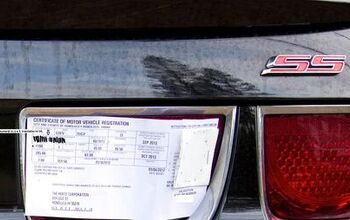
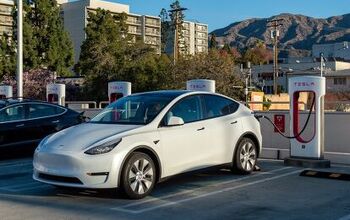
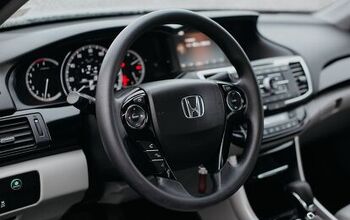
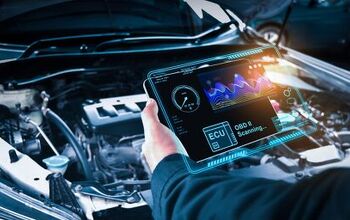

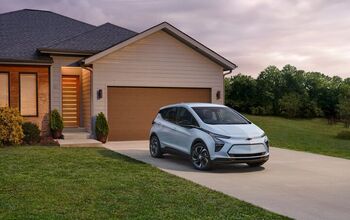
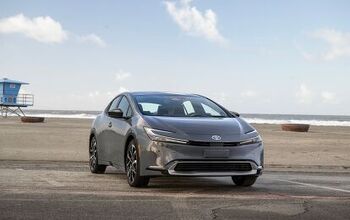




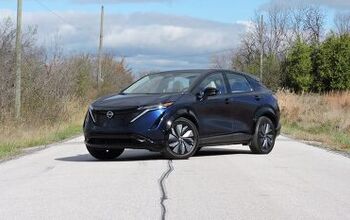




Comments
Join the conversation